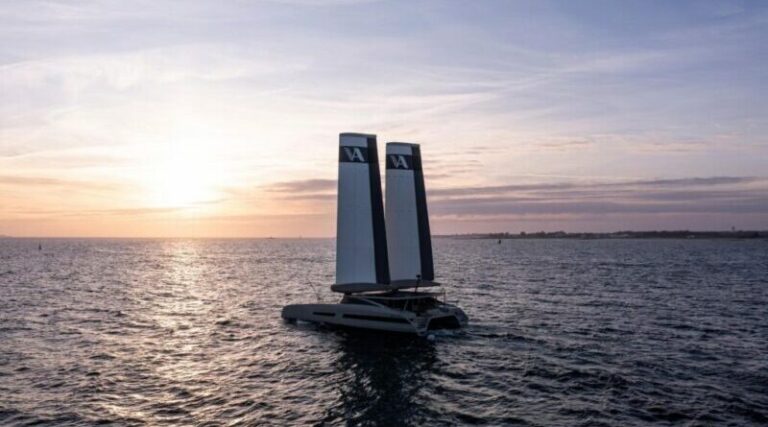Last Updated on: 5th July 2025, 10:39 am
Some companies use the word “eco” in their product names to try to fool buyers into believing their products are good for the environment, or at least, not bad. In the US, there are two auto manufacturers that used the words ‘eco diesel’ to make its pickup trucks seem environmentally friendly or fuel efficient. There are some food manufacturers that use the label “eco meat” to describe their meat products.
Diesel fuel and certain types of meat are not ecological, though, so the term is misleading. Similarly, there are “eco catamarans.” They are presented in online videos as being environmentally friendly because they have a small solar power array and some batteries. What isn’t so clear at first is that they also use diesel fuel and diesel engines. They are hybrid catamarans.
So, it’s pretty disappointing to watch YouTube videos about the alleged eco-catamarans only to find out they still use diesel, which is the opposite of environmentally friendly. Especially because yachts typically are outdoors in sunlight every day when they are docked, moored, or in use. That is, they can be outfitted with solar power and batteries to great effect. With catamarans in particular, they can also have sails, so they are viable candidates to go completely electric with solar power, and combined with their sail power, use no gas or diesel fuel.
The MODX 70 is fully electric, as in not a hybrid. It was refreshing to find that out and not be disappointed again by figuring out a so-called “eco” cat was actually just another fossil-fuel hybrid.
A MODX representative answered some questions about the MODX 70 for CleanTechnica.
What is the capacity for the solar power system?
The MODX 70 is equipped with 70m² of next-generation NME3 solar panels.
They can generate up to 15 kWp, covering approximately 35% of the vessel’s total energy mix.
What is the capacity for the battery system and what is the battery chemistry?
The battery bank has a capacity of 250 kWh, using LFP battery chemistry for enhanced safety and longevity.
What is the cruising range on batteries only and what is the cruising speed?
On batteries alone, the vessel can cruise 110 nautical miles at 5 knots.
What is the cruising range with sails and electric motors with adequate sunlight and battery storage?
With the sails, the autonomy is unlimited.
Typical sailing speeds depending on wind conditions:
10 knots wind → approx. 10 knots boat speed
15 knots wind → approx. 14 knots boat speed
20 knots wind → approx. 18 knots boat speed.
Do the props spin backwards at times to make electricity?
Yes, the MODX 70 features a variable-pitch propeller system capable of hydrogeneration.
It can regenerate between 3 and 15 kWp, depending on sailing speed, contributing to up to 35% of the vessel’s energy mix.
What is the kW output of the motors and how many motors?
The vessel is powered by four electric motors, two per hull each side delivering a total of 40 kW (i.e., 2×20 kW).
How many people can sleep onboard overnight?
The MODX 70 accommodates:
8 guests in 4 double cabins (2 cabins can be converted into 2 single beds)
3 crew members in 2 crew cabins.
How many crew are needed to sail it?
Technically, the vessel can be sailed by a single captain.
However, for charter operations and guest comfort, we recommend a crew of 3: captain, cook, and steward.
What is the vessel’s cost?
The price is undisclosed.
Sign up for CleanTechnica’s Weekly Substack for Zach and Scott’s in-depth analyses and high level summaries, sign up for our daily newsletter, and follow us on Google News!
Whether you have solar power or not, please complete our latest solar power survey.
Have a tip for CleanTechnica? Want to advertise? Want to suggest a guest for our CleanTech Talk podcast? Contact us here.
Sign up for our daily newsletter for 15 new cleantech stories a day. Or sign up for our weekly one on top stories of the week if daily is too frequent.
Advertisement
CleanTechnica uses affiliate links. See our policy here.
CleanTechnica’s Comment Policy

